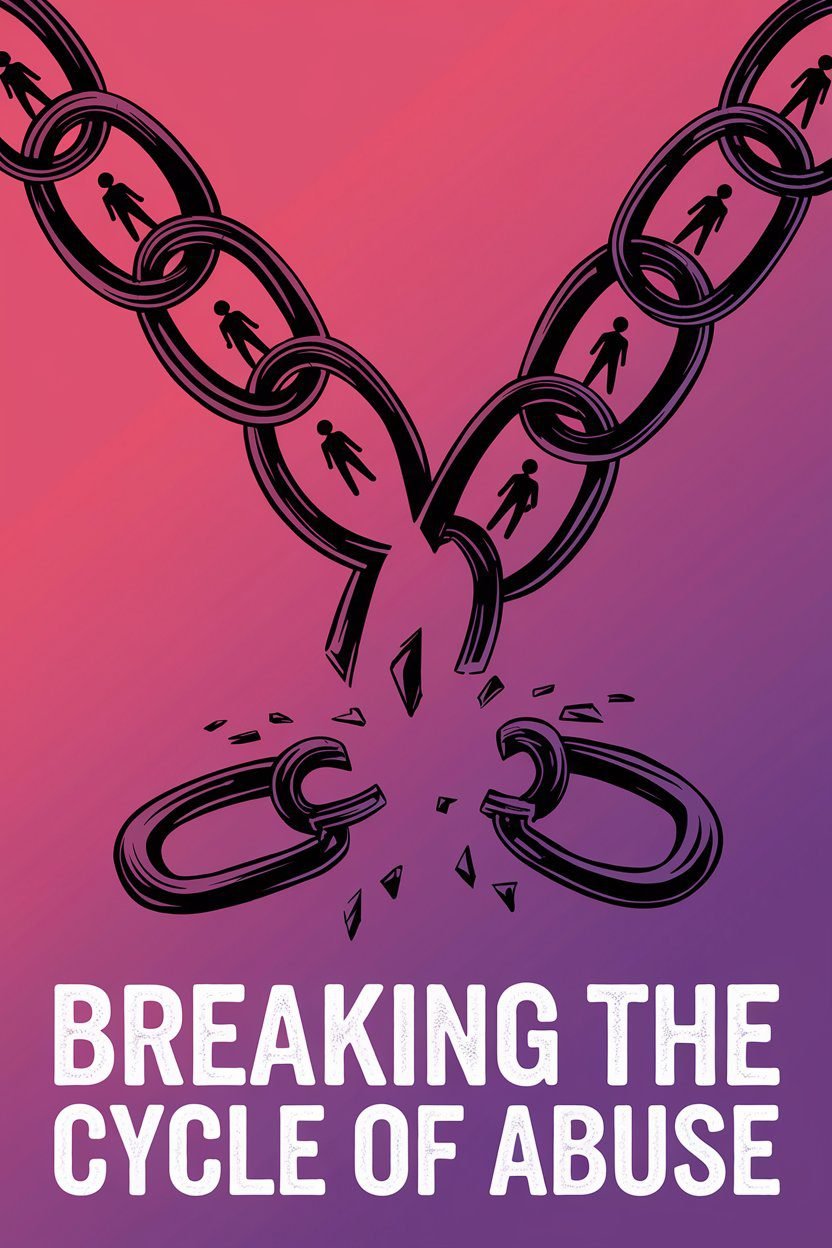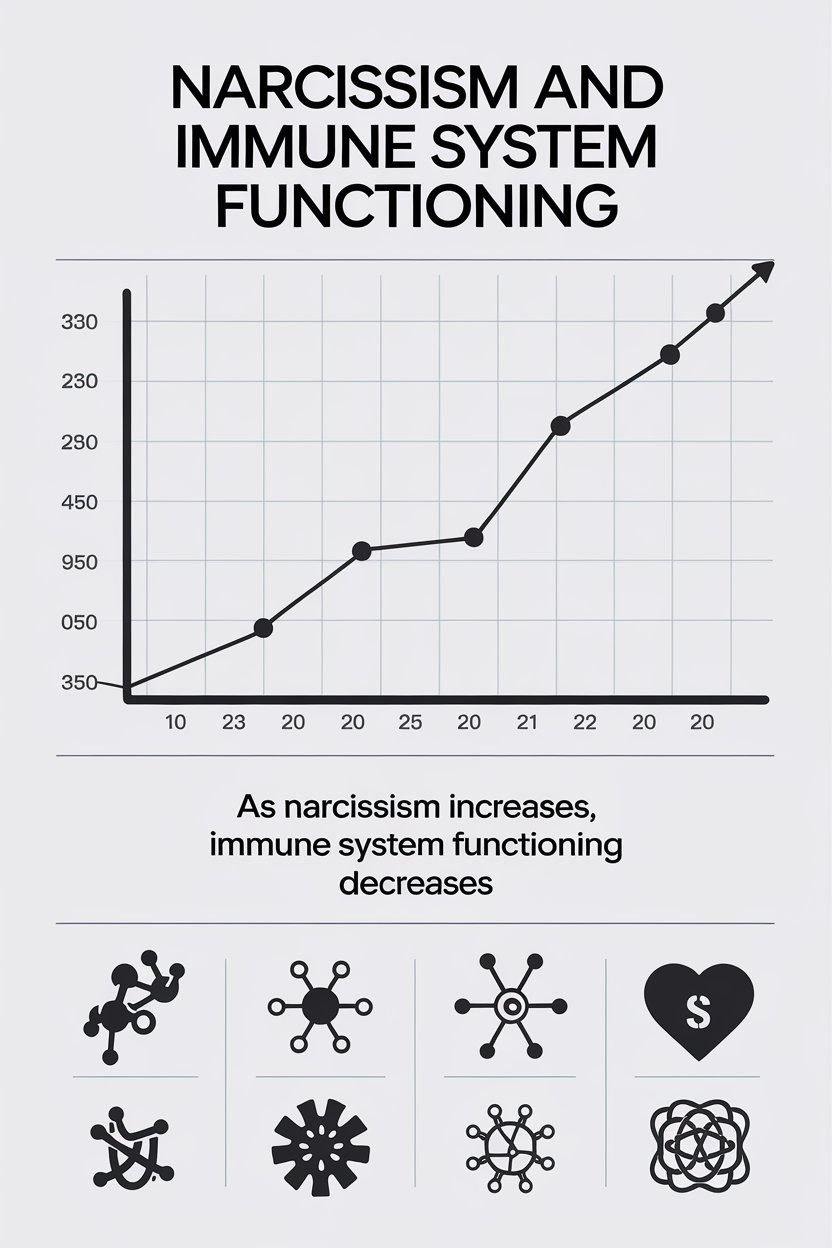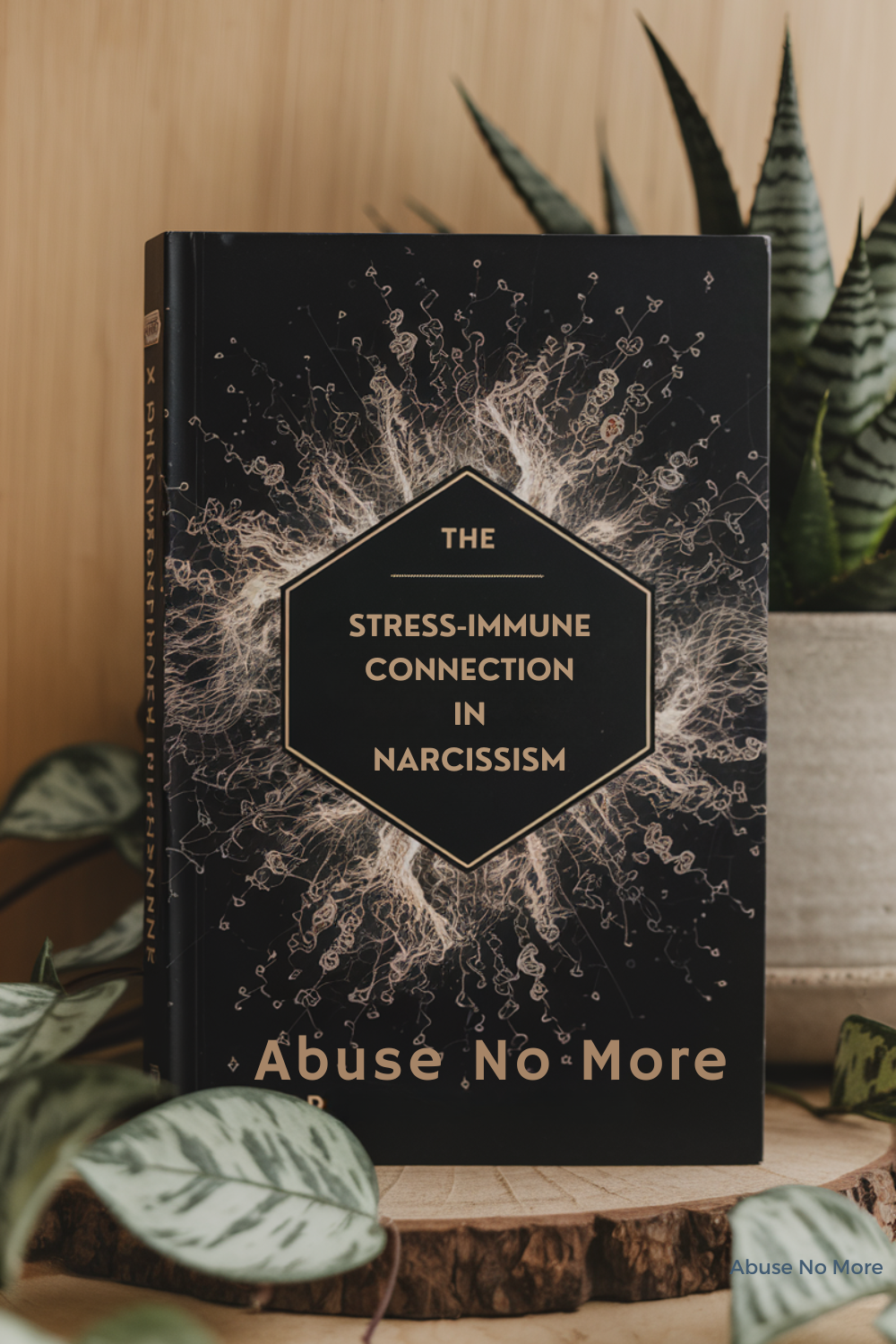
Chapter 1: Understanding Gaslighting
Defining Gaslighting
What Is Gaslighting? Gaslighting is a psychological manipulation technique that seeks to make a person doubt their own perceptions, memories, or understanding of events. This form of emotional abuse often occurs in personal relationships, workplaces, and even broader social contexts. The term originated from the 1938 play “Gas Light,” where a husband manipulates his wife into questioning her sanity by dimming the gas lights and denying that any change has occurred. The impact of gaslighting is profound, leading victims to lose confidence in their beliefs and experiences, which can distort their sense of reality.
At its core, gaslighting involves a systematic undermining of an individual’s confidence in their own thoughts and feelings. This might manifest through persistent denial of facts, misdirection, or the strategic use of misinformation. The gaslighter may twist the truth or present false narratives, forcing the victim to accept a reality that is contrary to their own experience. This manipulation can create a power imbalance in the relationship, with the gaslighter gaining control while the victim becomes increasingly disoriented and unsure of themselves.
Gaslighting can take many forms, from subtle comments that suggest a person is overreacting to overt lies about past events. Over time, these tactics can erode a person’s self-esteem and sense of identity. Victims may find themselves second-guessing their memories or feeling anxious about their emotional responses. This psychological strain can lead to a range of mental health issues, including anxiety, depression, and even post-traumatic stress disorder. Understanding these dynamics is crucial for identifying and addressing the impacts of gaslighting.
One of the challenges in defining gaslighting is the variability in its manifestations across different contexts. While it is often associated with intimate relationships, gaslighting can also occur in professional environments, among friends, or within societal structures. In workplaces, for example, a manager might undermine an employee’s contributions or distort their performance evaluations, leading to feelings of inadequacy and confusion. Acknowledging that gaslighting can exist in various forms helps to illuminate its pervasive nature and the need for vigilance in all areas of life.
In summary, gaslighting is a destructive practice that alters the reality of those affected. It thrives on manipulation and deceit, creating an environment where victims can no longer trust their own perceptions. Recognizing the signs of gaslighting is essential for individuals to reclaim their reality and seek support when needed. By defining gaslighting within its broad spectrum of contexts and impacts, we can better equip ourselves to confront and address this insidious form of emotional abuse.
Historical Context
Gaslighting, a term that has gained significant traction in contemporary discussions surrounding mental health and interpersonal relationships, has its roots in psychological manipulation that can be traced back to various historical contexts. The concept itself is derived from the 1938 play “Gas Light” by Patrick Hamilton, which depicts a husband who manipulates his wife into doubting her own perceptions and sanity. This theatrical representation highlights a pervasive dynamic that has echoed through time, where power imbalances enable one individual to distort another’s reality. Understanding the historical context of gaslighting not only illuminates its evolution but also underscores its implications in modern society.
Throughout history, gaslighting has manifested in numerous forms, often intersecting with social, political, and cultural frameworks. For instance, during the Enlightenment, the rise of rational thought challenged established norms and beliefs. However, this period also saw individuals and institutions employing deceptive tactics to uphold traditional power structures. Those in authority frequently undermined dissenting voices, fostering an environment ripe for gaslighting. The manipulation of truth and reality was not just confined to personal relationships but extended to political discourse, where misinformation served to obscure the actual conditions of society.
The twentieth century marked a significant turning point in the understanding of psychological manipulation. The aftermath of World War II brought about a heightened awareness of mental health issues, with psychological theories gaining traction. This era also saw the emergence of various social movements that challenged established power dynamics, including feminist movements that sought to address the gendered nature of gaslighting. Women’s experiences of being dismissed or invalidated became central to the discourse on psychological abuse, highlighting how societal structures can perpetuate gaslighting on a broader scale.
In contemporary society, the legacy of historical gaslighting practices continues to influence interpersonal dynamics and societal norms. The rise of digital communication has given new life to gaslighting behaviors, as misinformation can spread rapidly through social media platforms. This has led to an environment where individual perceptions of reality can be easily manipulated, making it increasingly difficult for people to discern truth from deception. The historical context of gaslighting thus serves as a reminder of the ongoing struggle against manipulative practices that seek to distort reality, emphasizing the need for critical thinking and awareness in today’s information-saturated world.
As we navigate the complexities of relationships and societal interactions, recognizing the historical roots of gaslighting is crucial. It allows individuals to better understand their experiences and the mechanisms at play in their environments. By contextualizing gaslighting within a historical framework, we can empower ourselves to challenge manipulative behaviors and advocate for a more truthful and supportive discourse, ultimately striving for a reality that honors individual perceptions rather than undermines them.
The Psychology Behind Gaslighting
Gaslighting is a complex psychological manipulation strategy that exploits the vulnerabilities of individuals to distort their perception of reality. It often begins subtly, with the gaslighter making small, seemingly innocuous comments or actions that cause the victim to question their thoughts, feelings, or memories. This gradual erosion of self-trust can be insidious, as the gaslighter may present themselves as a caring confidant while simultaneously undermining the victim’s sense of self. Understanding the psychological mechanisms at play in gaslighting is crucial for recognizing its damaging effects and reclaiming one’s reality.
One significant aspect of gaslighting is the power dynamics involved in the relationship between the gaslighter and the victim. The gaslighter often possesses a sense of superiority, whether through social status, intelligence, or emotional control, which they leverage to manipulate the victim. This power imbalance creates an environment where the victim feels increasingly dependent on the gaslighter for validation and affirmation. The psychological impact of this dependency can lead to a profound sense of isolation, as the victim may withdraw from friends and family, further entrenching them in the gaslighter’s distorted reality.
The process of gaslighting typically involves a series of tactics designed to confuse and disorient the victim. These may include denial, contradiction, and the use of false information to undermine the victim’s confidence in their own memories and perceptions. Over time, the victim may internalize the gaslighter’s narrative, leading to cognitive dissonance. This psychological conflict can manifest as anxiety, depression, and a pervasive sense of inadequacy, as the victim struggles to reconcile their own experiences with the distorted version presented by the gaslighter.
Additionally, gaslighting often preys on the victim’s emotional vulnerabilities, such as low self-esteem or a history of trauma. The gaslighter may exploit these weaknesses to deepen the victim’s sense of confusion and self-doubt. This exploitation not only reinforces the power dynamics but also complicates the victim’s ability to seek help or escape the situation. The psychological toll of gaslighting can result in long-lasting effects on the victim’s mental health, making recovery a challenging yet necessary journey.
Ultimately, recognizing the psychology behind gaslighting is essential for both victims and those who wish to support them. By understanding the tactics employed by gaslighters and the emotional vulnerabilities they exploit, individuals can better identify harmful patterns in their relationships. This awareness is the first step toward reclaiming one’s reality and rebuilding a sense of self. It also highlights the importance of fostering supportive environments where individuals can share their experiences without fear of judgment, paving the way for healing and empowerment.
Chapter 2: The Mechanics of Gaslighting
The Tactics Used in Gaslighting
Gaslighting is a psychological manipulation tactic that seeks to destabilize an individual’s perception of reality. The tactics commonly employed in gaslighting can vary significantly, but they often share a core purpose: to induce doubt and confusion in the victim’s mind. This manipulation can be executed through subtle techniques that gradually erode the victim’s confidence in their own thoughts and feelings, leading them to question their sanity. Understanding these tactics is crucial for recognizing and addressing gaslighting in various contexts, whether in personal relationships, workplaces, or broader societal interactions.
One prevalent tactic in gaslighting is denial. The gaslighter may outright deny events or conversations that have taken place, insisting that the victim is misremembering or exaggerating. This denial can be particularly disorienting for the victim, who may begin to feel as though their memory is unreliable. For instance, a gaslighter might say, “That never happened,” or “You’re just being overly sensitive,” which can reinforce feelings of confusion and self-doubt in the victim. Over time, this tactic can lead victims to second-guess their own recollections, creating an internal struggle between their lived experiences and the gaslighter’s narrative.
Another common tactic is the use of misinformation. Gaslighters often present false information as truth, sometimes relying on fabricated evidence or selective memories to support their claims. This misinformation can be delivered subtly, such as through half-truths or distorted interpretations of events. For example, a gaslighter might highlight only negative aspects of a situation while ignoring any positive elements, painting an inaccurate picture that serves their purpose. Victims may find themselves trapped in a web of lies, struggling to discern what is real and what is not, which can further exacerbate their feelings of isolation and confusion.
Isolation is also a key tactic used in gaslighting. Gaslighters often aim to cut off their victims from supportive friends and family members, creating an environment where the victim feels alone and vulnerable. This isolation can be achieved through various means, such as discouraging contact with others, sowing distrust among social circles, or outright forbidding communication. When victims are isolated, they are more likely to rely solely on the gaslighter’s version of reality, making it easier for the manipulator to control their perceptions and reinforce their distorted beliefs.
Lastly, projection is a tactic frequently employed by gaslighters, wherein they attribute their own negative behaviors or intentions to the victim. This can manifest through accusations or criticisms that distract from the gaslighter’s own actions, causing the victim to feel unjustly blamed or responsible for issues within the relationship. For example, a gaslighter may accuse the victim of being dishonest while themselves engaging in deceitful behavior. This tactical projection not only confuses the victim but also shifts the focus away from the gaslighter’s manipulation, allowing the cycle of gaslighting to continue unchecked. Recognizing these tactics is vital for anyone seeking to understand the dynamics of gaslighting and to protect themselves from its damaging effects.
Gaslighting in Personal Relationships
Gaslighting in personal relationships manifests as a form of psychological manipulation where one partner seeks to undermine the other’s perception of reality. This insidious tactic often involves the gaslighter denying, dismissing, or distorting facts, memories, or feelings, effectively causing the victim to second-guess their own thoughts and emotions. The impact of this manipulation can be profound, leading to confusion, insecurity, and a diminished sense of self-worth in the affected individual. Understanding how gaslighting operates within intimate relationships is crucial for recognizing its signs and developing strategies to counteract its effects.
The dynamics of gaslighting typically begin subtly, with the gaslighter making small, seemingly innocuous comments that challenge the victim’s version of events. Over time, these comments escalate in severity, as the gaslighter becomes increasingly bold in their attempts to control the narrative. For instance, they may deny having said something previously or insist that the victim is overreacting to a situation. This gradual escalation creates a reality where the victim feels isolated and unsure of themselves, often leading to a dependency on the gaslighter for validation and emotional support.
Victims of gaslighting frequently experience a range of emotional responses, including anxiety, depression, and frustration. The continuous questioning of their reality can lead to a significant erosion of trust in their own perceptions, making it difficult for them to engage in healthy decision-making. In many cases, victims may begin to doubt their memories and feelings, leading to a cycle of self-blame and confusion. This emotional turmoil is compounded by the gaslighter’s manipulation, which often includes shifting blame and minimizing the victim’s concerns, creating an environment where the victim feels powerless and trapped.
Recognizing gaslighting in personal relationships is essential for breaking free from its grip. Individuals must learn to identify specific behaviors that characterize gaslighting, such as persistent denial of facts, manipulation of information, and emotional withdrawal. Establishing clear boundaries and seeking external validation from trusted friends or mental health professionals can help victims regain their sense of reality. Additionally, documenting instances of gaslighting can serve as a tangible reminder of the manipulation, empowering the victim to confront the gaslighter and reclaim their narrative.
Ultimately, addressing gaslighting in personal relationships requires a combination of self-awareness, education, and support. Victims must understand that they are not alone in their experiences and that seeking help is a valid and necessary step toward healing. By fostering open communication and advocating for emotional honesty, individuals can create healthier relationship dynamics that prioritize mutual respect and understanding. Recognizing and addressing gaslighting not only aids in personal recovery but also contributes to a broader cultural awareness of the dangers of psychological manipulation in intimate relationships.
Gaslighting in Professional Environments
Gaslighting in professional environments manifests as a subtle yet pervasive form of manipulation that can distort an individual’s sense of reality. In workplaces, where hierarchical structures and power dynamics play crucial roles, gaslighting often emerges in interactions between supervisors and subordinates, as well as among colleagues. This behavior can take various forms, including denial of events, misrepresentation of facts, and the deliberate undermining of a person’s confidence and competence. The impact of gaslighting in these settings can lead to significant emotional and psychological distress, eroding trust, and diminishing productivity.
One common tactic of gaslighting in professional settings is the use of ambiguity. A manager might provide vague feedback that leaves an employee questioning their performance, leading to self-doubt and confusion. For instance, an employee might be told that their work is “not quite right” without specific guidance on how to improve. This lack of clarity creates a sense of instability, prompting the individual to second-guess their abilities. Over time, this can result in a toxic work environment where manipulation becomes normalized, and employees feel compelled to conform to uncertain expectations.
Moreover, gaslighting can be exacerbated by the competitive nature of many workplaces. Employees may feel pressured to engage in self-preservation tactics, which can include undermining each other to gain favor with management. This environment fosters secrecy and distrust, as individuals become wary of expressing their thoughts and feelings openly. When gaslighting occurs in this context, it not only damages relationships among colleagues but also stifles creativity and collaboration, crucial elements for a healthy workplace culture.
The consequences of gaslighting extend beyond immediate emotional harm; they can also impact an organization’s overall performance. A workforce plagued by insecurity and uncertainty is less likely to take initiative or engage fully in their roles. Employee turnover may increase as individuals seek healthier environments, leading to loss of institutional knowledge and increased recruitment costs. Furthermore, the reputation of the organization can suffer if gaslighting behaviors become known, deterring potential talent and damaging relationships with clients and stakeholders.
Addressing gaslighting in professional environments requires a proactive approach from both leadership and employees. Organizations must foster a culture of open communication, where feedback is constructive and specific. Training programs on emotional intelligence and conflict resolution can empower employees to recognize and confront gaslighting behaviors effectively. By promoting a transparent atmosphere and encouraging mutual respect, workplaces can mitigate the damaging effects of gaslighting and cultivate a more supportive and productive environment.
Chapter 3: Recognizing Gaslighting
Signs You Might Be a Victim
Recognizing the signs that you may be a victim of gaslighting is crucial for reclaiming your reality. One of the most common indicators is persistent confusion about your thoughts and feelings. If you frequently second-guess yourself or feel uncertain about your perceptions, it may be a sign that someone is manipulating your understanding of reality. This confusion often stems from the gaslighter’s tactic of dismissing your experiences, making you question the validity of your own emotions and thoughts.
Another sign is the experience of frequent self-doubt. Victims of gaslighting often find themselves questioning their memory and judgment. You may notice that you often apologize for your feelings or insist that you are overreacting, even when your emotions are valid. This pattern of self-doubt can create a cycle of insecurity, leading you to rely on the gaslighter for validation, further entrenching their control over your perception of reality.
Isolation is another significant red flag. If you find that your relationships with friends and family have diminished or that you have been distanced from your support network, this might indicate that you are being gaslit. Gaslighters often work to isolate their victims, making them more dependent on the manipulator for emotional support and validation. This isolation can intensify feelings of confusion and self-doubt, exacerbating the psychological effects of gaslighting.
Feeling as though you are constantly walking on eggshells is a critical sign of being a victim of gaslighting. If you find yourself overly cautious about what you say or do to avoid conflict or criticism, this may indicate that the gaslighter has created an environment of fear and uncertainty. This hyper-vigilance can significantly impact your mental health, making you anxious and on edge, as you struggle to maintain peace while navigating the shifting dynamics of your relationship.
Lastly, an overwhelming sense of disconnection from your sense of self can signal the presence of gaslighting in your life. If you feel as though you have lost sight of who you are or what you truly believe, this erosion of identity is a profound effect of manipulation. Gaslighters often twist reality to the point where victims may struggle to recognize their own values and beliefs. Recognizing these signs is the first step toward breaking free from the cycle of gaslighting and restoring your sense of self and reality.
The Role of Self-Doubt
Self-doubt often emerges as a pervasive consequence of gaslighting, acting as a silent enabler of the manipulative tactics employed by the gaslighter. When an individual is subjected to continuous questioning of their perceptions and feelings, they may begin to internalize these doubts, leading to a fractured sense of self. This internal turmoil can manifest in various ways, including anxiety, depression, and a distorted self-image. Understanding the role of self-doubt in the context of gaslighting is crucial for recognizing its damaging effects on mental health and personal relationships.
Gaslighting operates on the principle of destabilization, where the victim’s grasp on reality is systematically undermined. As the gaslighter invalidates the victim’s experiences, the victim is left feeling uncertain and confused. This uncertainty breeds self-doubt, causing individuals to question their memories, emotions, and even their sanity. The gaslighter’s influence can become so pervasive that the victim may start to accept the distorted reality presented to them, further entrenching their self-doubt and eroding their confidence in their judgment.
The interplay between gaslighting and self-doubt has significant implications for personal identity. Victims may find themselves struggling to assert their needs and desires, often prioritizing the gaslighter’s perspective over their own. This shift can lead to a loss of autonomy, as individuals become increasingly dependent on external validation for their self-worth. In essence, the gaslighter not only distorts reality but also reshapes the victim’s identity, making self-doubt a powerful tool for control.
Moreover, self-doubt can perpetuate a cycle of abuse, wherein the victim feels trapped in an unending loop of uncertainty and fear. As their confidence wanes, they may become less likely to seek support or challenge the gaslighter’s narrative. This isolation can be further compounded by the gaslighter’s tactics, which often include fostering a sense of shame or guilt in the victim. Consequently, the victim may internalize the belief that their self-doubt is a personal failing, rather than a response to the manipulative dynamics at play.
Breaking free from the grip of self-doubt requires a multifaceted approach, including self-reflection, education about gaslighting, and the cultivation of supportive relationships. Victims must learn to recognize the signs of gaslighting and understand that their feelings of doubt are not indicative of their worth or reality. By rebuilding their sense of self and embracing their perceptions, individuals can begin to reclaim their reality and diminish the power that self-doubt holds over them. Ultimately, acknowledging the role of self-doubt in the gaslighting experience is a crucial step toward healing and restoration.
Identifying Patterns of Manipulation
Identifying patterns of manipulation is crucial in understanding the dynamics of gaslighting, a psychological phenomenon that distorts an individual’s perception of reality. Gaslighting often involves a series of tactics that create confusion and self-doubt in the targeted individual. Recognizing these patterns can empower victims to reclaim their sense of truth and navigate their experiences with clarity. The manipulation often unfolds gradually, making it difficult to pinpoint specific moments of distortion, yet certain behavioral patterns consistently emerge in gaslighting relationships.
One common pattern is the systematic denial of reality. Gaslighters frequently dismiss or reframe events, conversations, or feelings, insisting that the victim’s recollection is flawed. For example, they may deny having said something hurtful or twist the context of a disagreement, making the victim question their understanding of the situation. This tactic not only undermines the victim’s confidence in their memory but also fosters dependency on the gaslighter for validation. Over time, this can lead to a pervasive sense of confusion, where the victim struggles to discern what is real and what is manipulated.
Another significant pattern is the use of projection. Gaslighters often attribute their own negative behaviors or intentions to the victim, suggesting that the victim is the one exhibiting manipulative or irrational behavior. This not only deflects responsibility from the gaslighter but also creates a scenario where the victim feels compelled to defend themselves against accusations that are unfounded. This can lead to an internalized narrative where the victim feels guilty or ashamed, further entrenching the gaslighter’s control over their perception of reality.
Isolation is another prevalent tactic that gaslighters employ. By distancing their victims from friends, family, or supportive networks, the gaslighter can create an environment where the victim feels alone and vulnerable. This isolation serves to amplify the gaslighting effects, as the victim may have fewer opportunities to validate their experiences with others. Without external perspectives, the victim is left to rely solely on the distorted interpretations of the gaslighter, which can significantly erode their self-esteem and sense of agency.
Finally, the inconsistency in the gaslighter’s behavior contributes to the confusion experienced by the victim. Gaslighters often oscillate between affection and hostility, creating an unpredictable emotional landscape. This inconsistency can lead the victim to second-guess their own reactions and feelings, as they attempt to rationalize the gaslighter’s erratic behavior. Such volatility not only keeps the victim off balance but also reinforces the gaslighter’s dominance in the relationship. Recognizing these patterns of manipulation is essential for victims seeking to reclaim their reality and establish healthier boundaries in their lives.

Chapter 4: The Impact of Gaslighting
Emotional and Psychological Effects
Gaslighting, a term derived from the 1944 film “Gaslight,” describes a manipulative tactic where one person seeks to undermine another’s perception of reality. The emotional and psychological effects of gaslighting can be profound and long-lasting. Victims often experience a gradual erosion of their self-esteem, leading to feelings of worthlessness and confusion. This manipulation creates a toxic environment where the victim constantly questions their thoughts, feelings, and even their sanity. Over time, the individual may internalize the gaslighter’s narrative, leading to a distorted self-image and a diminished sense of agency.
One of the most significant emotional consequences of gaslighting is anxiety. Victims frequently find themselves in a state of heightened alertness, second-guessing their decisions and emotional responses. This chronic state of stress can lead to anxiety disorders, characterized by excessive worry and fear. The unpredictable nature of a gaslighter’s behavior exacerbates this anxiety, as the victim never knows when the next incident will occur. The emotional turmoil can be debilitating, making it difficult for the victim to engage in daily activities or maintain relationships outside the gaslighting dynamic.
Depression is another common psychological effect experienced by those subjected to gaslighting. The constant undermining of one’s reality can lead to feelings of hopelessness and despair. Victims may withdraw from social interactions, believing that they cannot trust their perceptions or that others will not understand their experiences. This isolation further compounds feelings of loneliness and sadness, making it challenging for individuals to seek help or support. The cycle of gaslighting can create a downward spiral, where the victim feels increasingly trapped and powerless.
The impact of gaslighting extends beyond the individual, affecting interpersonal relationships. Victims may become emotionally distant, as they struggle to trust their own feelings and judgments. This mistrust can strain connections with friends, family, and colleagues, often leading to misunderstandings and conflict. Relationships that were once sources of support may become sources of additional stress, as victims may inadvertently project their feelings of confusion and distrust onto others. The gaslighter may also manipulate these relationships further, isolating the victim from potential allies and reinforcing their control.
Healing from the emotional and psychological effects of gaslighting is a complex process that requires time, support, and often professional intervention. Victims must learn to reclaim their sense of reality and self-worth. Therapy can be an essential tool in this journey, providing a safe space for individuals to process their experiences and rebuild their identities. Education about gaslighting and its effects can empower victims to recognize manipulation and establish healthier boundaries in the future. Ultimately, understanding the emotional and psychological ramifications of gaslighting is crucial for recovery and regaining control over one’s reality.
Physical Effects of Gaslighting
Gaslighting, a psychological manipulation tactic often employed in abusive relationships, can lead to a myriad of physical effects on individuals subjected to it. The term originates from the 1938 play “Gas Light,” where a husband manipulates his wife into questioning her own sanity. While the primary focus is on the psychological ramifications of gaslighting, its physical consequences are equally significant and deserve attention. Understanding these effects is essential for recognizing the full scope of gaslighting’s impact on an individual’s health and well-being.
One of the most common physical manifestations of gaslighting is chronic stress. Victims often experience heightened anxiety and tension due to the constant undermining of their reality. This persistent state of stress can lead to a range of health issues, including headaches, digestive problems, and weakened immune responses. The body, when under continuous stress, releases cortisol, a hormone that, in excess, can contribute to various ailments, such as heart disease and metabolic syndrome. Over time, the cumulative effect of stress can severely diminish an individual’s quality of life and overall health.
Sleep disturbances are another prevalent physical effect of gaslighting. Victims may struggle to fall asleep or experience frequent awakenings during the night, leading to insomnia or other sleep disorders. The anxiety and confusion resulting from gaslighting can create a cycle of restlessness, making it difficult for individuals to achieve restorative sleep. Poor sleep can exacerbate other physical health issues, leading to fatigue, difficulty concentrating, and a general decline in mental and emotional well-being. This lack of restorative sleep further perpetuates the victim’s vulnerability, making it challenging to break free from the gaslighting cycle.
Physical symptoms such as fatigue and muscle tension are also commonly reported among those experiencing gaslighting. The mental strain of questioning one’s perceptions can manifest as physical exhaustion, making everyday tasks feel overwhelming. Additionally, muscle tension often results from the body’s response to stress, leading to discomfort and chronic pain in various parts of the body. The interplay between mental and physical health is intricate; as mental distress increases, so too does the likelihood of experiencing physical symptoms, creating a vicious cycle that can be difficult to escape.
Lastly, gaslighting can significantly impact an individual’s self-care and lifestyle choices. Victims may find themselves withdrawing from social interactions and neglecting their physical health due to feelings of inadequacy or confusion instilled by their abuser. This withdrawal can lead to poor nutrition, lack of exercise, and decreased engagement in activities that once brought joy. Over time, these lifestyle changes can compound the physical effects of gaslighting, resulting in a deteriorating state of health. Recognizing these patterns is crucial for both victims and advocates, as addressing the physical consequences of gaslighting is an integral part of healing and recovery.
Long-Term Consequences on Mental Health
Gaslighting, a manipulative tactic often employed in interpersonal relationships, can have profound long-term consequences on an individual’s mental health. Victims of gaslighting frequently experience a distortion of their reality, leading to significant emotional and psychological distress. Over time, this ongoing manipulation can erode self-esteem, foster anxiety, and result in a pervasive sense of confusion. As individuals struggle to trust their perceptions and feelings, the impact on their mental health becomes increasingly evident, necessitating a deeper understanding of these long-term effects.
One of the most pronounced consequences of enduring gaslighting is the development of anxiety disorders. Victims often find themselves in a state of hyper-vigilance, constantly second-guessing their thoughts and emotions. This heightened state of alertness can lead to chronic anxiety, as individuals fear being invalidated or manipulated again. The relentless questioning of one’s reality can cultivate a sense of instability, making it difficult to navigate everyday life without experiencing overwhelming stress and apprehension about the future.
Depression is another common outcome for those who have been subjected to gaslighting. The continuous undermining of one’s self-worth creates a fertile ground for feelings of hopelessness and despair. Victims may internalize the gaslighter’s dismissive messages, leading to a pervasive belief that they are unworthy or incapable. This internalized negativity can spiral into clinical depression, characterized by withdrawal from social interactions, loss of interest in previously enjoyed activities, and pervasive feelings of worthlessness.
Furthermore, gaslighting can lead to a severe decline in interpersonal relationships. Individuals who have undergone this form of psychological manipulation may struggle to trust others, fearing that they will be deceived or invalidated once again. This mistrust can create isolation, as victims withdraw from friends and family to protect themselves from potential harm. Over time, this social disconnection exacerbates feelings of loneliness and despair, further entrenching the mental health challenges that arise from gaslighting experiences.
Addressing the long-term consequences of gaslighting on mental health requires a multifaceted approach. Therapy can play a crucial role in helping victims reconstruct their shattered sense of reality and rebuild their self-esteem. Cognitive-behavioral techniques can assist individuals in challenging distorted beliefs and reclaiming their perceptions. Support groups may also provide a sense of community, allowing victims to share their experiences and foster connections with others who understand their struggles. Ultimately, recognizing and addressing the lasting impact of gaslighting is essential for healing and recovery, enabling individuals to reclaim their reality and mental well-being.
Chapter 5: Gaslighting and Reality
How Gaslighting Distorts Perception
Gaslighting is a psychological manipulation tactic that distorts a person’s perception of reality. It often involves a systematic undermining of an individual’s beliefs, memories, and experiences. This form of emotional abuse can lead the victim to question their sanity, causing a significant shift in how they perceive themselves and their environment. The term originates from the 1944 film “Gaslight,” where a husband manipulates his wife into doubting her own perceptions in a deliberate attempt to control her. Understanding how gaslighting operates is essential in recognizing its damaging effects on perception.
At its core, gaslighting distorts reality by introducing doubt. The gaslighter often dismisses or contradicts the victim’s experiences, insisting that what the victim remembers or feels is incorrect. This denial can manifest in various ways, such as trivializing the victim’s emotions or suggesting that they are overreacting. Over time, the victim may start to internalize these messages, leading to confusion about what is real. This erosion of trust in one’s own mind creates a fertile ground for the gaslighter to exert further control, as the victim becomes increasingly reliant on the gaslighter’s version of reality.
The emotional impact of gaslighting can be profound. Victims may experience anxiety, depression, and a diminished sense of self-worth. The constant questioning of their perceptions can lead to a state of hyper-vigilance, where the individual feels the need to constantly monitor their thoughts and feelings for validation. This heightened state of awareness can be exhausting and can further distort their ability to engage with reality. As the victim becomes more entangled in the gaslighter’s narrative, they may feel isolated from friends and family, compounding their sense of confusion and despair.
Gaslighting can also affect interpersonal relationships. When a gaslighter successfully distorts a victim’s perception, they may begin to alienate the victim from their support system. Friends and family may notice changes in the victim’s behavior or beliefs, which can lead to misunderstandings and further isolation. The gaslighter often portrays themselves as the only reliable source of truth, making it difficult for the victim to seek help or validation from others. This isolation reinforces the gaslighter’s control and deepens the victim’s reliance on their distorted perception of reality.
Recognizing the signs of gaslighting is crucial for regaining control over one’s perception. Awareness of the manipulation tactics used by gaslighters can empower victims to challenge the distorted narratives imposed upon them. Strategies such as journaling experiences, seeking therapy, and reaching out to trusted individuals can help rebuild a sense of reality. By reclaiming their narrative, victims can begin to restore their perception and break free from the cycle of manipulation. Understanding how gaslighting distorts perception is a vital step in the journey toward healing and regaining autonomy over one’s reality.
The Loss of Trust in One’s Own Mind
The experience of gaslighting profoundly affects an individual’s perception of reality, often leading to a profound loss of trust in one’s own mind. This phenomenon occurs when a person is subjected to manipulative tactics that distort their understanding of events, feelings, and even their own memories. The gaslighter employs a range of strategies, including denial, misdirection, and contradiction, creating an environment where the victim begins to doubt their own thoughts and perceptions. Over time, this consistent psychological assault can erode the very foundation of self-trust, leaving the victim feeling disoriented and confused.
One of the most insidious aspects of gaslighting is its gradual nature. Initially, the victim may feel uncertain about their feelings or experiences, but as the gaslighter continues to challenge their reality, these feelings of doubt can deepen. Victims might find themselves questioning simple memories or emotions, leading to a pervasive sense of instability. This can manifest as anxiety, depression, and even a sense of detachment from one’s own identity, as the individual struggles to reconcile their perceptions with the distorted views presented by the gaslighter.
The impact of losing trust in one’s own mind can be devastating. Many victims report a sense of isolation, as they feel unable to share their experiences with others for fear of being dismissed or further manipulated. This isolation can reinforce the gaslighter’s control, as the victim may become increasingly reliant on the gaslighter for validation and support. The internal conflict can create a cycle of dependency that further entrenches the victim in the gaslighting dynamic, making it increasingly difficult to break free.
Restoring trust in one’s own mind after experiencing gaslighting is a challenging process that requires intentional effort and support. Victims often benefit from therapy or counseling, where they can work through their experiences in a safe environment. This process includes validating their feelings, rebuilding a sense of self, and learning to differentiate between their own perceptions and the distortions introduced by the gaslighter. By nurturing a supportive network and engaging in self-reflection, individuals can begin to reclaim their sense of reality and rebuild their internal compass.
Ultimately, the journey to regain trust in one’s mind is not just about recovering from the trauma of gaslighting; it is also about empowerment. As victims learn to recognize the tactics of manipulation and assert their own perceptions, they can develop a stronger sense of agency over their lives. This reclamation not only aids in healing but also serves as a reminder of the resilience of the human spirit in the face of psychological adversity. By fostering self-awareness and critical thinking, individuals can protect themselves from future gaslighting, ensuring that their reality remains firmly rooted in their own truth.
Rebuilding a Sense of Reality
Rebuilding a sense of reality after experiencing gaslighting is a crucial step in the recovery process. Gaslighting often leads individuals to doubt their perceptions, memories, and even their sanity. This manipulation can create a distorted sense of reality that makes it difficult for victims to trust themselves. Understanding the nature of gaslighting is essential for individuals to begin reconstructing their understanding of truth and reality. Awareness of these manipulative tactics allows victims to identify and detach from the false narratives imposed upon them.
The first step in rebuilding this sense of reality involves acknowledging the experience of gaslighting. Victims often feel isolated and confused, struggling to validate their feelings and experiences. It is essential to recognize that these feelings are legitimate responses to manipulation. By affirming that gaslighting is a form of emotional abuse, individuals can begin to reclaim their narratives. This acknowledgment serves as a foundation for healing, as it validates the victim’s reality and counteracts the disorientation caused by the gaslighter.
Next, establishing a support system is vital for recovery. Engaging with trusted friends, family members, or mental health professionals can provide a safe space for victims to express their thoughts and feelings without judgment. These supportive relationships can help individuals gain perspective and reinforce their sense of reality. Sharing experiences with others who have faced similar situations can foster a sense of community and understanding, further aiding the healing process. It is through these connections that individuals can begin to articulate their experiences and rebuild their identities.
In conjunction with support from others, personal reflection plays a significant role in restoring a sense of reality. Keeping a journal can be an effective tool for victims to document their thoughts, feelings, and experiences. This practice encourages self-exploration and assists in distinguishing between reality and the distorted perceptions instilled by the gaslighter. By regularly reflecting on their experiences, victims can identify patterns of manipulation and begin to separate their truth from the lies they’ve been led to believe. This process fosters a deeper understanding of their reality and strengthens their confidence in their perceptions.
Finally, it is essential to cultivate self-compassion throughout the recovery journey. Victims of gaslighting may carry feelings of shame or self-blame, believing they could have done something to prevent the manipulation. Embracing self-compassion involves recognizing that the fault lies with the gaslighter and not with the victim. Developing a kinder inner dialogue can help individuals heal and empower them to trust their instincts and perceptions once again. By fostering a compassionate relationship with themselves, victims can gradually rebuild their sense of reality and move toward a healthier and more authentic existence.

Chapter 6: Strategies for Recovery
Acknowledging the Experience
Acknowledging the experience of gaslighting is crucial for individuals who find themselves in its deceptive grasp. Gaslighting, a form of psychological manipulation, typically involves one person distorting another’s perception of reality, leading them to doubt their own thoughts, feelings, and experiences. Recognizing that gaslighting often exists in various relationships—be it romantic, familial, or professional—helps individuals understand the broader implications of this behavior. The acknowledgment of one’s experience can serve as the first step toward healing and reclaiming a sense of self that has been compromised.
Victims of gaslighting often struggle with confusion and self-doubt, as their reality is systematically undermined by the gaslighter. This manipulation can manifest in subtle ways, such as dismissing feelings or trivializing experiences. Over time, the affected individual may begin to question their sanity or worth, feeling isolated and unsure of their own perceptions. By openly acknowledging these experiences, individuals can validate their feelings and recognize that their struggles are not merely figments of imagination but genuine emotional responses to a harmful dynamic.
In acknowledging the experience, it is essential to differentiate between the gaslighter’s tactics and the victim’s reality. Gaslighters often employ denial, misdirection, and contradiction, creating an environment that fosters uncertainty. By recognizing these tactics, victims can begin to disentangle their thoughts from the gaslighting influence. This process involves critical self-reflection and, often, external support from trusted friends, family members, or mental health professionals who can provide validation and insight that counteracts the gaslighter’s narrative.
Furthermore, acknowledging the experience of gaslighting is a profound act of self-empowerment. It involves reclaiming agency and asserting one’s truth despite the distortion imposed by the gaslighter. This journey is not only about recognizing past experiences but also about developing resilience against future instances of manipulation. By understanding the signs of gaslighting, individuals can protect themselves from similar situations and foster healthier relationships built on trust and respect.
Ultimately, the act of acknowledging one’s experience with gaslighting is a pivotal moment in the journey toward healing and recovery. It allows individuals to confront the pain inflicted upon them, understand the dynamics at play, and take proactive steps toward rebuilding their self-esteem and perception of reality. This acknowledgment can lead to a deeper understanding of personal boundaries and the importance of nurturing supportive relationships that honor and validate one’s lived experiences.
Establishing Boundaries
Establishing boundaries is a critical step in navigating relationships affected by gaslighting. Gaslighting can distort one’s perception of reality, leading to confusion and self-doubt. To reclaim a sense of self and clarity, individuals must first identify and communicate their personal boundaries. These boundaries act as a safeguard, delineating what is acceptable and what is not, thereby fostering an environment where one’s reality is respected. Without established boundaries, the gaslighter may have free rein to manipulate perceptions further, making it essential for the affected individual to assert their needs and limits.
The process of establishing boundaries begins with self-awareness. Individuals must reflect on their feelings and experiences to determine what behaviors they find unacceptable. This introspection can be challenging, especially for those who have been subjected to gaslighting, as it requires sorting through layers of confusion and doubt. Journaling can be an effective tool in this regard, allowing individuals to articulate their thoughts and feelings without external influence. By gaining clarity about their needs, individuals can better communicate these boundaries to others, making it easier to assert their reality.
Communicating boundaries requires both courage and assertiveness. When addressing a gaslighter, it is crucial to remain calm and composed, as emotional reactions can be exploited to further manipulate the situation. Clear and concise language is essential; individuals should express their limits firmly and without ambiguity. For instance, stating specific behaviors that are unacceptable and the consequences of crossing these boundaries can serve as a deterrent to further gaslighting. This communication can also help reinforce one’s reality, as articulating personal limits can strengthen self-perception and provide a clear framework for interactions.
Implementing and maintaining boundaries is an ongoing process. Gaslighting often entails a pattern of manipulation, and the gaslighter may attempt to test or undermine the established boundaries. Consistency is vital; individuals must adhere to their limits and follow through with any consequences if those boundaries are violated. This consistency not only reinforces the individual’s sense of self but also signals to others that their reality and needs are valid. Over time, this practice can help rebuild confidence and clarity, allowing individuals to reclaim their perception of reality.
Finally, establishing boundaries is not solely about protecting oneself from gaslighting; it also promotes healthier relationships overall. By setting clear limits, individuals create an atmosphere of mutual respect and understanding. This process encourages open communication and fosters emotional safety, allowing for more authentic interactions. As individuals learn to assert their boundaries, they not only disrupt the cycle of gaslighting but also cultivate an environment where their reality is acknowledged and valued. In this way, establishing boundaries becomes a vital tool in the journey toward healing and empowerment.
Seeking Professional Help
Seeking professional help is a crucial step for individuals who find themselves entangled in the complexities of gaslighting. This psychological manipulation often leaves victims questioning their own perceptions, memories, and even sanity. Recognizing the need for support is essential, as gaslighting can create an isolated and vulnerable state, making it difficult for individuals to regain clarity and confidence in their reality. A mental health professional can provide a safe space to explore these feelings and experiences, helping individuals understand the impact of gaslighting on their mental health.
Therapists trained in trauma-informed care can offer valuable insights into the patterns and tactics commonly employed by gaslighters. They can help victims identify the signs of manipulation and validate their experiences, which is often a critical first step in the healing process. Through various therapeutic approaches, such as cognitive-behavioral therapy (CBT) or trauma-focused therapy, individuals can learn to reconstruct their narratives and develop coping strategies to combat the lingering effects of gaslighting. This re-framing of experiences is vital for restoring a sense of agency and autonomy.
In addition to individual therapy, support groups can also play a significant role in recovery. Connecting with others who have experienced similar forms of emotional abuse fosters a sense of community and understanding. Group settings provide opportunities for sharing stories, gaining different perspectives, and realizing that one is not alone in the struggle against gaslighting. Hearing from others who have navigated similar challenges can empower individuals, reinforcing the notion that recovery is possible and that healing takes time.
It is essential for those seeking professional help to choose practitioners who are sensitive to the nuances of gaslighting and its effects. Not all mental health professionals are equipped to handle these specific dynamics, so individuals should seek out those with experience in emotional abuse and trauma. This can include asking targeted questions during initial consultations about their familiarity with gaslighting, as well as their approach to treatment. Establishing a trusting relationship with a therapist is paramount, as it provides a foundation for exploring deeply personal and often painful experiences.
Ultimately, seeking professional help is a vital step in reclaiming one’s reality after experiencing gaslighting. The journey to recovery may be challenging and complex, but with the right support, individuals can learn to navigate their experiences, rebuild their self-esteem, and restore their sense of reality. By addressing the psychological wounds inflicted by gaslighting, individuals can embark on a path toward healing and empowerment, transforming their disrupted perceptions into a clearer understanding of themselves and their experiences.
Chapter 7: Prevention and Awareness
Educating Yourself and Others
Educating yourself and others about gaslighting is crucial for recognizing and combating its effects. Understanding the psychological mechanisms involved in gaslighting allows individuals to identify manipulative behaviors in themselves and others. It is essential to familiarize yourself with the signs of gaslighting, which may include constant questioning of one’s reality, denial of facts, and the instillation of doubt regarding one’s perceptions. By learning about these tactics, you empower yourself to respond more effectively and to support others who may be experiencing similar situations.
Once you have equipped yourself with knowledge about gaslighting, the next step is to share this understanding with those around you. Education is a powerful tool in breaking the cycle of manipulation. Engage in conversations with friends, family, and colleagues about what gaslighting is and how it manifests in various relationships, whether personal, professional, or social. By fostering an open dialogue, you create an environment where individuals feel safe discussing their experiences and seeking help if needed.
In educational settings, incorporating discussions about gaslighting into curricula can further enhance awareness. Schools and workplaces can organize workshops and training sessions focused on mental health and emotional well-being, highlighting the signs of gaslighting and its potential impact. This proactive approach not only aids in the recognition of gaslighting but also promotes a culture of empathy and support, allowing individuals to understand the importance of validation and healthy communication.
Furthermore, utilizing various platforms to spread awareness about gaslighting can amplify your efforts. Social media, blogs, and community forums provide accessible channels to share personal experiences, educational resources, and expert insights. By creating and sharing content that demystifies gaslighting, you contribute to a larger movement aimed at dismantling harmful dynamics and fostering healthier relationships. This collective effort encourages those affected to seek help and reinforces the notion that they are not alone in their struggles.
Ultimately, the journey of educating yourself and others about gaslighting is ongoing. Continuous learning and sharing of knowledge are vital in combating this pervasive issue. As you deepen your understanding, encourage others to do the same, creating a ripple effect that can lead to greater awareness and healing within communities. By taking these steps, you not only reclaim your own sense of reality but also help others to navigate the complexities of their experiences, fostering resilience and empowerment in the face of manipulation.
Creating Supportive Environments
Creating supportive environments is essential in counteracting the effects of gaslighting, which often leads individuals to doubt their perceptions and reality. A supportive environment fosters open communication, validation of experiences, and emotional safety, all of which are crucial for those who have been victims of manipulation. By cultivating spaces where people can express their thoughts and feelings without fear of judgment or dismissal, we empower them to reclaim their sense of self and reality.
One of the first steps in creating a supportive environment is establishing trust. Trust is built through consistent, honest communication and active listening. When individuals feel heard and understood, they are more likely to share their experiences and concerns openly. This is particularly important for those affected by gaslighting, as their experiences may have been dismissed or invalidated in the past. Encouraging dialogue and validating emotions helps dismantle the isolation often felt by victims, reinforcing the understanding that their feelings are legitimate.
Another critical aspect is the presence of empathetic allies. Supportive environments thrive when individuals are surrounded by friends, family, or community members who empathize with their struggles. Empathy involves not only understanding but also acknowledging the pain and confusion that gaslighting can cause. Allies can play a significant role in helping victims regain confidence in their perceptions by offering reassurance and affirming their experiences. This network of support can be instrumental in the healing process, allowing individuals to feel less alone in their journey.
Education is also a vital component in creating supportive environments. Increasing awareness about gaslighting and its effects can empower individuals to recognize manipulative behaviors in themselves and others. Workshops, seminars, and informational resources can equip both victims and allies with the knowledge needed to identify gaslighting tactics and understand the psychological impact they have. By fostering an informed community, we create a culture that actively opposes manipulation and promotes healthy relationships based on respect and understanding.
Finally, it is essential to incorporate self-care practices into supportive environments. Encouraging individuals to engage in activities that promote mental health and well-being can be transformative. This may include mindfulness practices, therapy, or creative outlets that allow for personal expression. When individuals prioritize their mental health and surround themselves with supportive resources, they are better equipped to combat the effects of gaslighting. Creating environments that promote healing, empowerment, and resilience is crucial in helping victims reclaim their reality and rebuild their lives.
Promoting Healthy Communication
Promoting healthy communication is a crucial aspect of mitigating the effects of gaslighting and fostering an environment where individuals can express their thoughts and feelings openly. Healthy communication involves active listening, empathy, and validation, creating a space where all parties feel respected and heard. It is essential to establish a foundation of trust, as this allows individuals to engage in honest dialogues without the fear of judgment or manipulation. By prioritizing transparency and clarity in conversations, individuals can better navigate their emotional landscapes and prevent the insidious nature of gaslighting from taking root.
Active listening plays a pivotal role in promoting healthy communication. This involves not only hearing the words being spoken but also understanding the underlying emotions and intentions. Active listeners provide feedback that reflects their understanding, encouraging the speaker to delve deeper into their thoughts and feelings. This practice can counteract gaslighting, as it helps individuals reaffirm their experiences and emotions. When people feel genuinely listened to, they are less likely to second-guess their realities, which is a common tactic used by gaslighters to undermine confidence.
Empathy is another essential component of healthy communication. It allows individuals to connect on a deeper level, acknowledging and validating each other’s feelings. When empathy is present, individuals are more likely to support one another and navigate conflicts constructively. In the context of gaslighting, fostering empathy can counteract the isolating effects of manipulation. By understanding and validating the emotions of others, individuals can create a supportive environment that encourages authenticity and reduces the likelihood of emotional distortion.
Establishing boundaries is vital for promoting healthy communication. Clear boundaries define acceptable behavior and communication styles, helping to prevent misunderstandings and potential gaslighting scenarios. When individuals articulate their limits, they empower themselves and others to engage in respectful interactions. Moreover, boundaries can serve as a protective measure against manipulative behaviors, ensuring that conversations remain constructive and focused on mutual understanding rather than control or dominance.
Ultimately, promoting healthy communication requires a commitment to continuous growth and learning. Individuals must be willing to reflect on their communication styles, recognize their triggers, and seek feedback from others. By fostering an environment that values open dialogue, empathy, and respect, individuals can create a buffer against the tactics of gaslighting. This proactive approach not only strengthens relationships but also empowers individuals to reclaim their narratives, reinforcing their sense of reality in the face of potential manipulation.
Chapter 8: Moving Forward
Reclaiming Your Reality
Reclaiming your reality after experiencing gaslighting is a crucial step toward restoring your sense of self and understanding. Gaslighting, a form of psychological manipulation, often leaves individuals questioning their perceptions, memories, and beliefs. This disorientation can create a profound impact on one’s identity and worldview. To reclaim your reality, it is essential to first acknowledge the effects of gaslighting. Understanding that your experiences and feelings are valid is fundamental to breaking free from the disorienting grip of a gaslighter.
The process begins with self-reflection and validation. Journaling can be an effective tool for documenting your thoughts, feelings, and experiences. By writing down your perceptions of events and your emotional responses, you create a tangible record that reinforces your reality. This practice not only helps in clarifying your thoughts but also serves as a reminder of your truth when doubts arise. Recognizing patterns in your interactions with the gaslighter can illuminate the manipulation techniques they employed, allowing you to distance yourself from their influence.
Building a support network is another essential aspect of reclaiming your reality. Surrounding yourself with empathetic friends, family, or support groups can provide a safe space to express your feelings and experiences. Sharing your story with trusted individuals helps reinforce your perceptions and affirm your reality. These connections can offer different perspectives and insights, helping you to see the situation more clearly. Engaging with others who have experienced similar situations can also foster a sense of community and understanding, which is invaluable in the healing process.
Education about gaslighting and its effects can empower you to reclaim your narrative. By understanding the tactics used by gaslighters, you can better identify manipulative behavior in the future. Knowledge serves as a protective barrier, equipping you with the tools to recognize when your reality is being challenged. This awareness not only strengthens your resolve but also cultivates a greater sense of autonomy over your thoughts and beliefs. As you become more educated, you will find it easier to trust your judgment and intuition.
Finally, embracing self-care practices is vital in the journey of reclaiming your reality. Prioritizing your mental, emotional, and physical well-being can help restore balance in your life. Engage in activities that bring you joy and peace, such as meditation, exercise, or creative pursuits. These practices can enhance your overall sense of self and reinforce the importance of your individual experiences. By nurturing yourself, you create a foundation upon which you can build a renewed sense of identity, free from the distortions inflicted by gaslighting. Reclaiming your reality is an empowering journey that requires patience, but with commitment and support, it is entirely achievable.
Building Resilience
Building resilience is a critical aspect of recovering from the damaging effects of gaslighting. Resilience refers to the capacity to withstand or recover quickly from difficulties. In the context of gaslighting, where an individual’s reality is systematically undermined, developing resilience can serve as a protective mechanism against the emotional and psychological toll inflicted by manipulative behaviors. This process involves fostering an inner strength that enables individuals to navigate and ultimately rise above their experiences of manipulation.
The first step in building resilience is self-awareness. Recognizing the signs of gaslighting is essential for individuals to understand the extent of the manipulation they have endured. This awareness allows victims to validate their own experiences, feelings, and perceptions, which are often dismissed or invalidated by the gaslighter. By acknowledging the reality of their situation, individuals can begin to reclaim their sense of self and establish a foundation for resilience. Journaling, reflecting on experiences, and seeking external feedback can aid in this process of self-discovery and validation.
Another crucial component of resilience is cultivating a strong support system. Gaslighting can lead individuals to feel isolated, as their reality is consistently questioned. Reaching out to trusted friends, family members, or support groups can provide a sense of belonging and affirmation. Such connections can offer crucial perspectives that counter the gaslighter’s narrative, reinforcing the victim’s reality and fostering a sense of safety and acceptance. Building a network of support not only helps individuals process their experiences but also empowers them to stand firm against further manipulation.
Developing coping strategies is also vital in the journey toward resilience. Individuals affected by gaslighting may experience heightened anxiety, confusion, and self-doubt. Learning and practicing coping techniques, such as mindfulness, meditation, or cognitive-behavioral strategies, can help manage these emotional responses. These tools enable individuals to ground themselves in the present and disrupt the cycle of negative thinking that gaslighting often perpetuates. By equipping themselves with these techniques, individuals can enhance their emotional regulation and better navigate challenging situations.
Finally, fostering a growth mindset can significantly contribute to resilience. Embracing the belief that challenges are opportunities for growth allows individuals to reframe their experiences with gaslighting as lessons learned rather than permanent scars. This perspective encourages a proactive approach to healing, as individuals seek to understand their experiences and use them as a stepping stone toward personal development. By viewing their journey through the lens of resilience, they can transform adversity into strength, ultimately reshaping their reality in a way that honors their truth and agency.
Finding Empowerment Through Experience
Finding empowerment through experience is a crucial aspect of overcoming the effects of gaslighting. Individuals subjected to this psychological manipulation often find their reality distorted, leading to feelings of confusion, self-doubt, and isolation. However, reclaiming one’s sense of self and understanding the mechanisms of gaslighting can transform these experiences into a source of strength. Empowerment begins with the acknowledgment of what has occurred and the realization that one’s perspective is valid.
The journey toward empowerment involves recognizing the signs of gaslighting and understanding its impact on mental health. Victims may experience a range of emotional responses, including anxiety, depression, and a pervasive sense of inadequacy. By educating themselves about gaslighting tactics, such as denial, misdirection, and trivialization, individuals can better identify the behaviors of gaslighters. This awareness is the first step in reclaiming control over one’s narrative and fostering resilience against further manipulation.
Sharing personal experiences can also be a powerful tool for empowerment. Engaging in discussions with trusted friends, support groups, or mental health professionals allows individuals to articulate their experiences and validate their feelings. Listening to others who have faced similar challenges can foster a sense of community and belonging, reinforcing the understanding that they are not alone in their struggles. This shared understanding can dismantle the isolation that gaslighting often creates, providing a collective strength that empowers individuals to stand firm in their reality.
Moreover, developing coping strategies is essential in the healing process. Techniques such as journaling, mindfulness, and cognitive reframing can help individuals process their experiences and develop a clearer sense of identity. Journaling allows for reflection and the articulation of thoughts and feelings, while mindfulness practices can ground individuals in the present moment, reducing the impact of distressing memories. Cognitive reframing encourages a shift in perspective, enabling individuals to challenge distorted beliefs instilled by gaslighters and reinforce their self-worth.
Ultimately, finding empowerment through experience involves a commitment to personal growth and healing. As individuals gain insight into the dynamics of gaslighting and begin to reclaim their narrative, they cultivate resilience and self-advocacy. This journey is not linear and may involve setbacks, but with each step taken, individuals can emerge stronger and more self-aware. By transforming the pain of gaslighting into a catalyst for empowerment, they can redefine their reality and build a future rooted in authenticity and strength.
🚀 Ready to Take Back Control? Start Now!
📖 Read Love Bombing: The Basics – The first step in breaking free from manipulation. Learn how narcissists use love bombing to trap their victims—and how to break the cycle.
🔗 Get it now on Kindle Unlimited or grab your copy today!

✨ The Proven IMC Method™ – Abuse No More Exclusive
🚀 Backed by 20+ years of research and investigative experience.
🔎 Built on the same psychological warfare techniques used by top government agencies—so you can see manipulation before it even starts.
🛡 The IMC Method™ is designed to expose, dismantle, and neutralize narcissistic manipulation—so you can break free, reclaim your power, and protect yourself with confidence.
🔗 Start Reading & Take Back Your Power! 🚀🔥
















































